- FireStarters - The Nichefire Newsletter
- Posts
- Why We Stopped Talking About Trend Hunting, And Started Talking About Culture
Why We Stopped Talking About Trend Hunting, And Started Talking About Culture
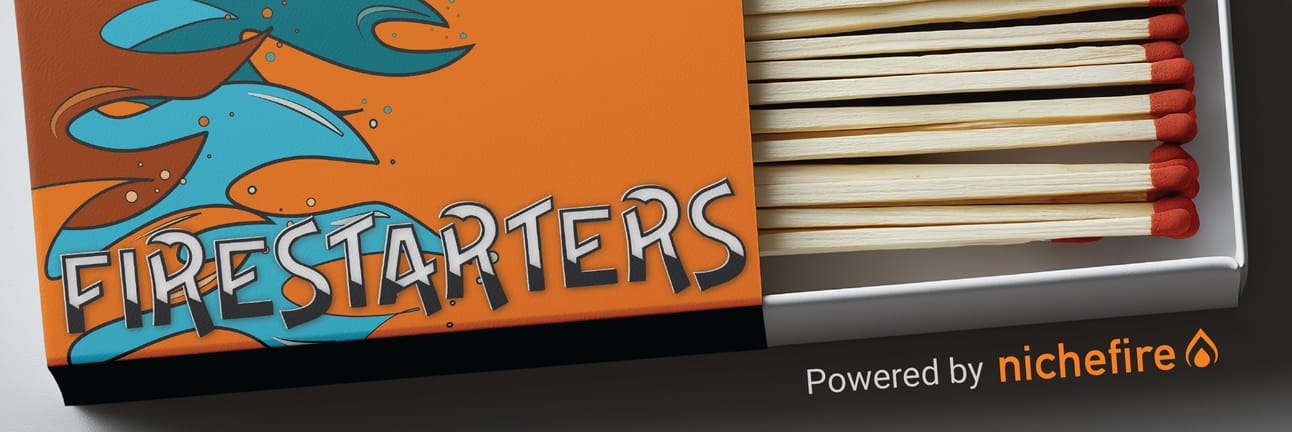
Welcome back to FireStarters—your weekly spark of cultural insight that leads to real, strategy-shaping action.
In a world where “Social intelligence” has become synonymous with trend hunting — we’re advocating for a different, culture-first approach. The focus is bigger, less risky, and focused on what’s most important at the end of the day: understanding people.
Here’s what you’ll get in this week’s edition:
Team Update: What got us thinking about culture vs trends
Crash Course: How trends fit with culture
Feature: 5 reasons trend hunting could hold your brand back
Case Study: Street food
Using Nichefire: 2 tools for culture over trends
Team Highlight: Khalil in Columbus
Sometimes it takes a lookalike to see what makes you different
Recently, another platform launched something that looked… familiar.
The messaging, the product, even the phrasing—it echoed some of what we’ve built at Nichefire. Naturally, we took a closer look.
What we found was telling:
While it looked similar, their approach was all about chasing the conversation—what’s loud, what’s viral, what’s now.
That was the moment it clicked.
What sets Nichefire apart isn’t just what we track—it’s how we understand.
Nichefire doesn’t just follow trending conversations—the platform uses data to decode the underlying values, mindsets, and shifts driving them. We help brands understand not just what’s being said, but why it’s being felt.
Crash Course: How trends fit with culture
Trends are a subset of culture—they’re visible signals that something might be shifting beneath the surface. But without context, they can mislead.
A trend might hint at a deeper movement, or it might be a red herring: loud, fast-moving, and ultimately irrelevant. That’s why studying trends in isolation is risky.
It’s like reading the ripples on a lake and assuming you know the weather system above it.
To make sense of what’s truly changing, you have to look at a trend along with thousands of other trends to see the broader cultural currents—values, beliefs, behaviors—that shape those ripples in the first place. Start with culture, then read the trends. Not the other way around.
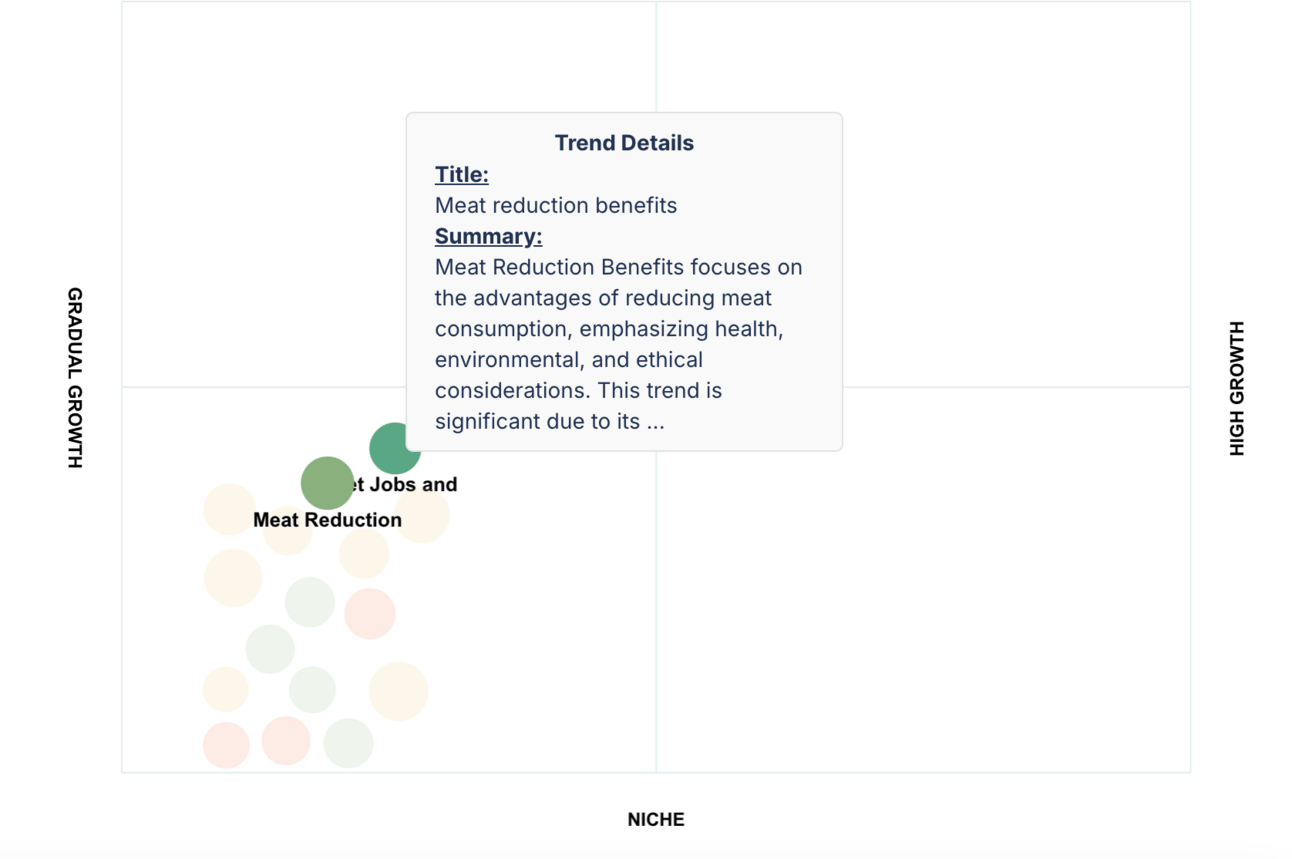
🚫 5 reasons trend hunting could hold you back
Whether it's a product rushed to market for a fleeting fad or a cringeworthy campaign trying too hard to go viral, chasing trends leaves brands reactive, forgettable, and out of sync with what people really care about.
At Nichefire, we help brands step off the hamster wheel and align with culture in a way that builds trust, relevance, and long-term equity.
1. Trends fade—culture endures
Whether it’s froyo or the resurgence of flip phones, trends are prone to spike. Then they vanish. Aligning with culture, on the other hand, keeps your brand in the conversation long after the hype dies down. Cultural movements like homegrown health or AI agency aren’t just moments. They’re mindsets.
Nichefire Power: Our cultural-first models help you identify not just what’s hot, but why it matters—so you can invest in ideas with staying power.
2. It can hurt more than help
When brands misuse memes, co-opt slang, or insert themselves into cultural moments they don’t understand, the result isn’t relevance—it’s ridicule. You risk losing consumer trust (and looking like the “hello fellow kids” guy).
Nichefire Power: We use AI-powered NLP to decode tone, sentiment, and social nuance—so you never miss the meaning behind the moment.
3. Culture builds loyalty
Trend-chasing might get you seen temporarily. But cultural resonance is what gets you chosen. Brands that understand slow culture—the rituals, values, and long-term shifts people actually live by win deeper loyalty.
Example: “Homegrown Health” may look like a TikTok trend, but it’s rooted in deep values: autonomy, ancestral wisdom, and distrust of the mainstream. That’s a cultural shift, not a passing phase.
4. Trend hunting is reactive
Traditional trend dashboards show you what’s happening now. Nichefire shows you what’s beneath current consumer behavior, so you can see opportunities for where it’s headed next.
We map how ideas spread across platforms, communities, and time—so you can plan, not just pivot.
Translation: You stop being late to the party. You start setting the tone.
5. Culture captures complexity
Trends are one-dimensional. Culture is layered. It’s where identity, beliefs, behaviors, and emotions intersect.
Instead of asking, “What’s trending?” ask, “What’s shifting?” with tools like:
Culture Libraries that cluster related signals into anthropologist-reviewed decks (see below)
Cross-platform pattern recognition
Emotional tone analysis
You’ll understand not just what people care about—but why.
Get access to the CultureSparks Library
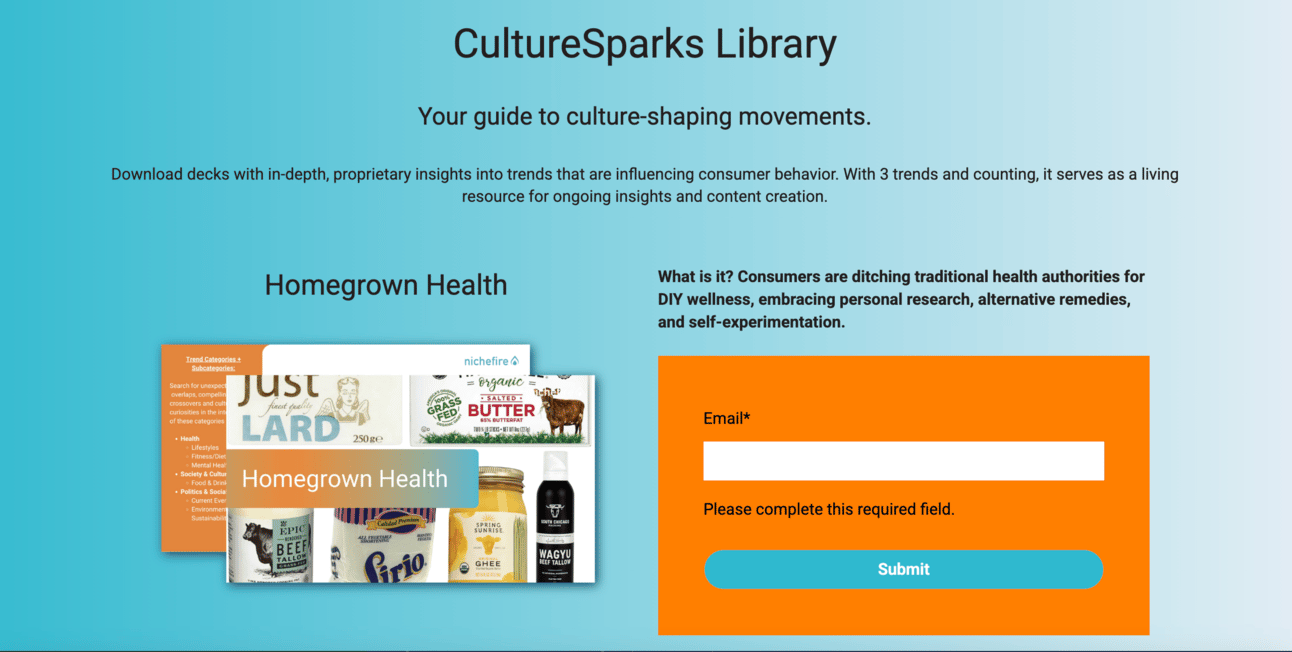
This year, we asked: “What if business leaders could quickly get up to speed on the major cultural movements shaping trends in consumer behavior?”
Enter CultureSparks — a library of must-see, anthropologist-reviewed decks designed for busy professionals. No new platforms to learn, just clear, impactful insights into the trends influencing the people that matter most to you.
Culture in action: Street food vs global flavors
If you’ve watched a reel recently, scrolled through Facebook or clicked through YouTube, you’ve probably seen a street food parody video. It’s the perfect example of how “trend hunting” could lead a brand to misunderstand audience sentiment. Here’s an example:
Street food is trending right now, but not for the right reasons. Videos like the one above of chaotic, unappetizing “street food” are gaining attention. Comedy accounts showing “vendors” slapping ice into their armpit or cutting chicken with a toenail poke fun at real videos of unappetizing or chaotic street food videos.
Here’s the result: “street food” is starting to signal messiness and mockery rather than global flavor and authenticity.
This is where trend hunting falls short. A surface-level read suggests popularity around street food, but cultural sensing reveals the real story: sarcasm, skepticism, and a cultural shift in meaning.
While global flavors are genuinely gaining ground, jumping on the “street food” trend without context can backfire. Cultural sensing helps brands move past the noise, uncovering real sentiment and tapping into deeper movements like homegrown health and culturally rooted nourishment.
Using Nichefire
A closer look at two product features to help you understand the culture behind trends.
Trend Summary View
Nichefire’s Trend Summary view helps users quickly grasp the full story behind a trend they’ve seen on their dashboard or searched for in FireSearch. It goes beyond surface-level data to explain not just what’s happening, but why—uncovering the deeper cultural forces driving the trend. For example, you’ll see “pet jobs” as the trend, but the real insight is the growing cultural shift toward integrating pets into every aspect of daily life.
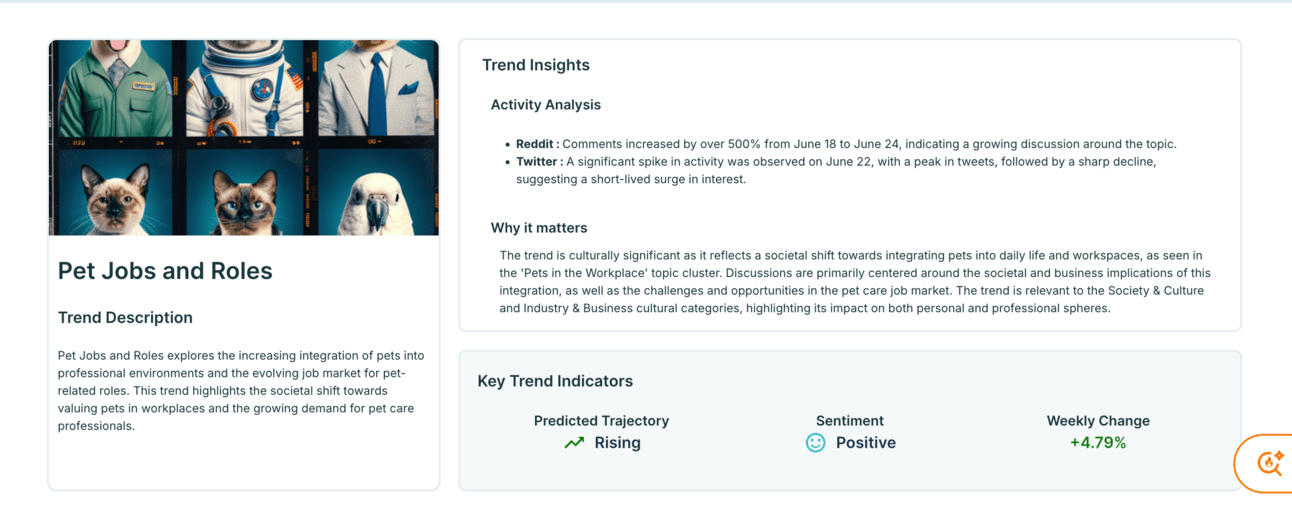
Theme Explorer Theme Explorer is to culture what a blueprint is to a house—a top-down view of the interconnected trends that shape a cultural movement. It helps brands identify which trends align with a broader movement, revealing opportunities that resonate culturally and strategically.
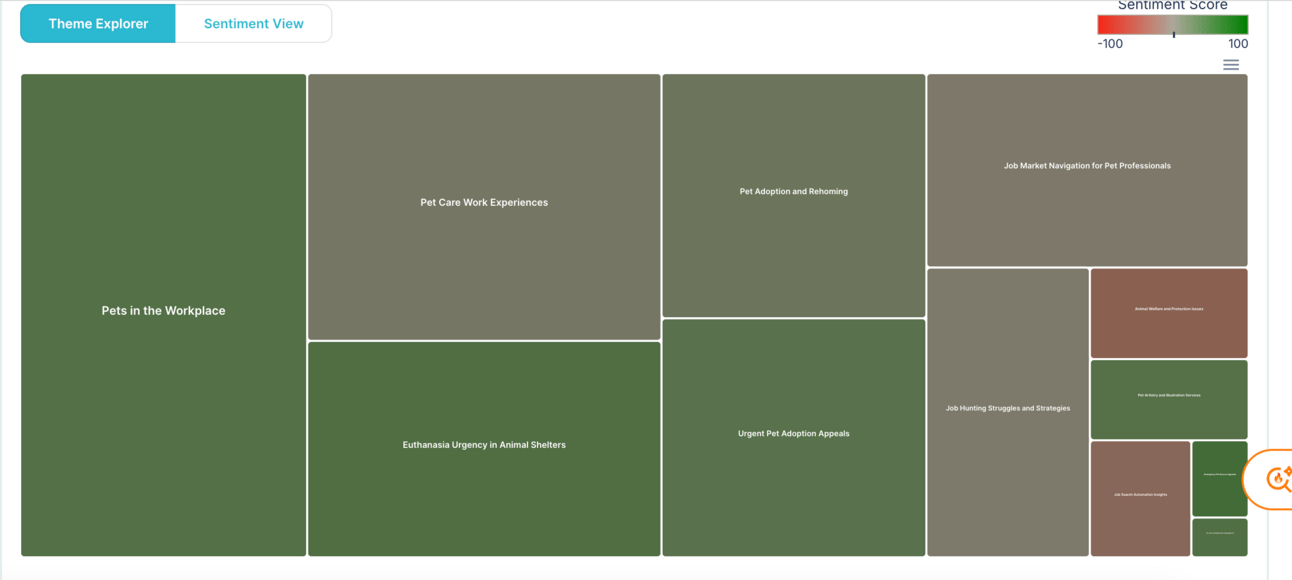
Team highlight: Khalil In Columbus
Sometimes, it’s tempting to try and seem bigger than you are. But we’re not about that. We’re all about startups, and helping other startups grow.
Khalil spoke at The Corporate Connection by Rev1 Ventures, sharing what it really takes to sell as an early-stage startup. He highlighted our people-first approach — focusing on empathy, consistency, and helping champions succeed beyond the sale.
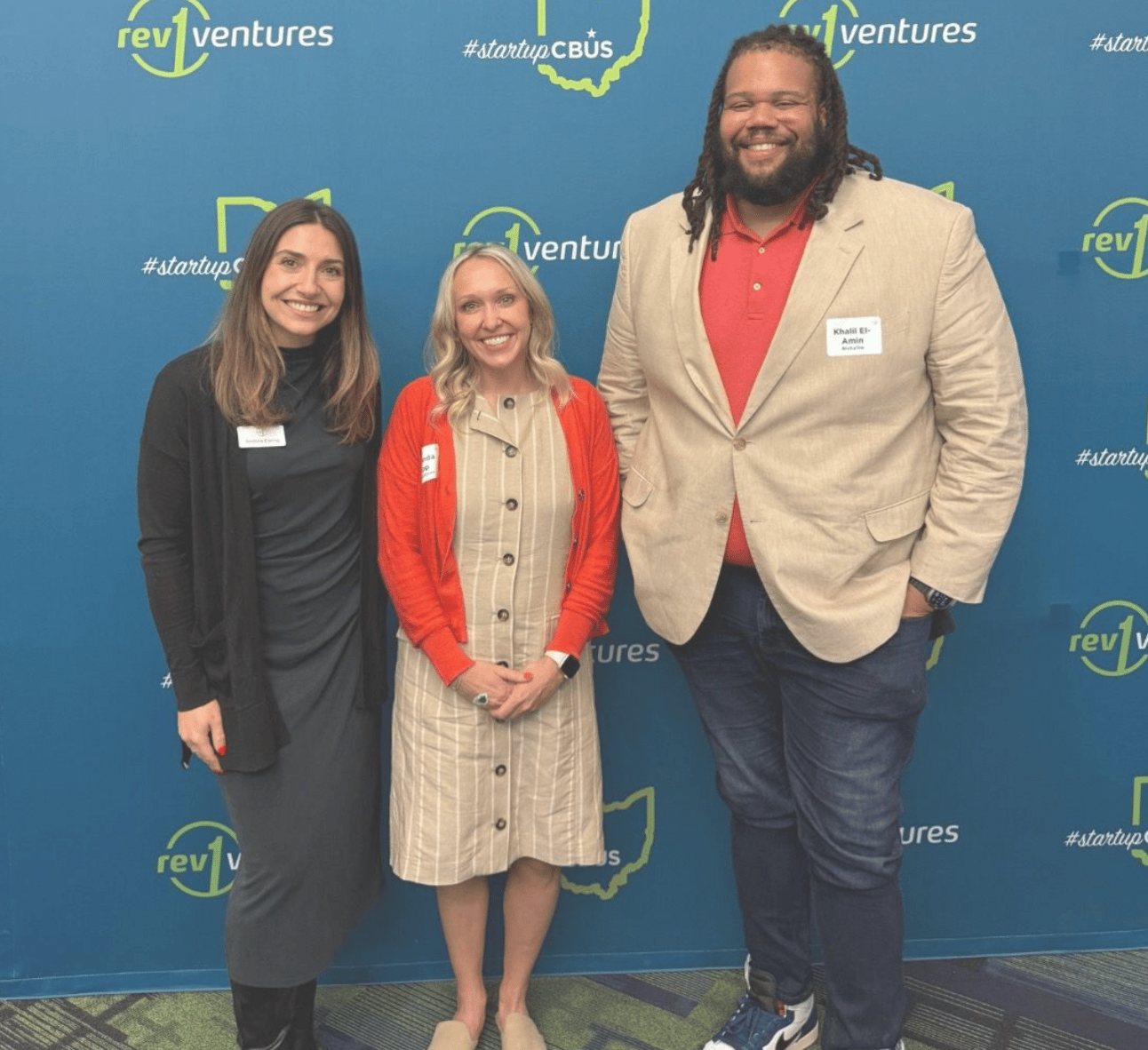

Joined by Amanda Epp of ScriptDrop, the panel showcased contrasting startup stages, with one unforgettable moment: Amanda’s daughter decorating her face mid-convo — a reminder of the realness behind the work.
We’d like to send a big thank you to Rev1, Andrea Ewing, and everyone who made space for honest conversations about the startup grind. Events like these quiet the impostor syndrome and remind us that showing up authentically matters.
And that’s a wrap on Volume 4.
Each week, we’re coming back with more insights to help you use culture to start fires. Next week we’re breaking down one of our most popular product features yet: FireSearch™ and why it’s your secret weapon for product launches.
We’ll see you then.